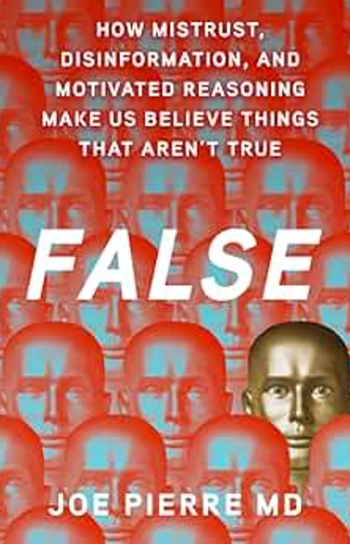
- Vol 34 No 10
- Volume 34
- Issue 10
Multiplex Melodies
What one brings to the table from one’s own life may figure prominently -and poignantly -in one’s response to a film score.
GreenbergOnTheArts
In the early silent era, pianists patched together swatches of prefabricated music to accompany the onscreen action -furious chases, passionate smooches, banana-peel pratfalls, and so forth. During the succeeding century, film scoring evolved into a unique, largely unappreciated art. Today’s reader is likely to be educated in musical history, theory, composition, performance conventions, as well as cinema technology. Skill at apt quotation of music from every nation and category, past and present, classic to rap is also a requisite.
Hans Zimmer (Gladiator [2000], Crimson Tide [1995]) scored most of the music for Christopher Nolan’s magisterial Dunkirk (2017). The film’s central theme, however, was originally written by Sir Edward Elgar. It’s from the famous Nimrod movement of Elgar’s Enigma Variation, repurposed by Zimmer’s lesser-known but no less accomplished collaborator, David Wallfisch.
Wallfisch retained Elgar’s quintessentially British bell-like clarity and stateliness. But befitting the dire, inglorious circumstances of the 300,000 soldiers stranded on the bloody beach, Wallfisch re-orchestrated the theme, endowing it with a somber, attenuated quality. In musical terms, the music has also been augmented, extending throughout the pivotal scene when a fragile flotilla of weekend sailors materializes out of the murky mist to rescue the wildly cheering multitude.
On each of 2 viewings, Wallfisch’s poignant reinvention of the Nimrod motif brought unaccustomed tears to my eyes. And made me realize -not for the first time -how less powerful a scene like this would be without music. Hence the following examples of the devices used by film composers to stir our emotions.
Cinema scholars theorize that audiences are swept up by a movie by paradoxically effacing the very means of its creation. Resulting from cunning manipulation of camera, lighting, etc, the picture seems to be unspooling from somewhere back in one’s head, instead of being projected upon the screen.
The technology and aesthetics involved in this curious erasure were perfected in Hollywood’s golden studio years. Most films still employ them. A familiar example is “shot-reverse shot” lensing: when 2 characters are speaking together, each is alternately perceived from a camera angle over the other’s shoulder. Unobtrusive “background” music likewise facilitates the “suppressed” process that sweeps a viewer out of his comfortable seat and into a movie’s realm, as it were from the wings.
Wittingly or otherwise, I think we bring some sort of ego-ideal to the multiplex, preparing us in advance to identify with positive qualities in a film’s character -notably, a hero -we want to own. Identification, even a temporary dose of introjection may be evoked via a musical “signature,” the equivalent of a Wagnerian leitmotif that encapsulates a hero’s virtuous intentions or virtuoso kung-fu talent.
Many contemporary blockbusters re-invent the heroic musical signatures found in the simplistic Saturday serials of my youth (eg, John Williams’s robust manly theme for the Indiana Jones franchise). The hero’s leitmotif is usually composed in a major key; then modified according to dramatic vicissitudes (eg, converted to a minor key when the going gets rough). Minor key heroic signatures are rare -the twanging James Bond theme is a notable exception.
The Saturday serial villain rode a black horse to a minor-key theme. Darth Vader’s menacing motif in Star Wars (1977 [John Williams again]) updates that convention. Comic characters usually have pixilated major-key leitmotifs (the ruinous golf-course excavations of the goofy gopher in Caddyshack [1980] are accompanied by Kenny Loggins’s I’m Alright!).
Morally equivalent characters often are given more complex musical signatures (eg, the undulating modulations of David Grusin’s haunting theme for Laura’s [1944] enigmatic heroine). Even an inanimate object may be provided with a signature that highlights its dramatic relevance -the Maltese Falcon (1940) statuette would be merely decorative, were it not for the ominous minor-key chords of Adolph Deutsch’s score that announces its presence.
A film’s opening music frequently establishes the picture’s narrative focus and setting; it is then repeated and modified harmonically and rhythmically, according to the plotline. Maurice Jarre’s grandly sweeping orchestral declaration over the opening credits of Lawrence of Arabia (1962) intimates the vast desert reaches that will enrapture the hero, and later accompany his fall from grace.
Background music heightens the viewer’s emotional response across a spectrum of genres. The shock of the shower scene in Psycho (1960) is escalated by the high-pitched shrieking violins of Bernard Herrman’s exquisite score. (Herrman, Hitchcock’s favorite composer, rejected the percussion and horns of standard horror fare, and used strings alone, a sonic coup de cinema.)
Music escalates the emotional impact of other genres (eg, the wailing theremin, an electronic instrument invented in the last century, frequently eerily pervaded 1950s sci-fi alien-arrival movies). The redoubtable Herrman used it in The Day the Earth Stood Still (1951).
Background music of one film may reappear, repurposed for radically different psychological ends, in a later film. The eponymous Shane (Alan Ladd) revenges an innocent settler’s shooting by donning his gunfighter outfit (probably for the last time) and riding into town to dispatch villainous Jack Wilson (Jack Palance). In Victor Young’s impressive score, Shane’s return is accompanied by relentlessly pounding tympani in a 5/8 time signature, rare in a 1950s film, rarely used hereafter.
Clint Eastwood’s Unforgiven (1992) reads as a blistering satire of Shane (1953). Reformed gunslinger Will Munny, his malevolence -and competence -restored by whisky, blows away the sadistic sheriff who tortured his best friend to death. The ominous chords that background Munny’s terminal ride into stygian darkness are in Shane’s 5/8 time signature but are menacingly retarded (again, augmentation) in Danny Elfman’s score, with whispery sinister strings replacing the ear-shattering tympany in Shane.
I prize those few instances when a film’s music emerges from the background to become a narrator in its own right. In Martin Scorsese’s American Gigolo (1980), Lauren Hutton’s hapless socialite, Michelle, trapped in a loveless marriage to a corrupt politico, has fallen in love with Richard Gere’s narcissistic male prostitute, Julian. The politician vengefully manipulates Gere’s arrest, and possible life imprisonment.
The last scene is set in the interview cubicle of a police station. The lovers speak to each other through phones across a screen. Gere murmurs, “It took me so long to come to you . . .” The theme from the second movement of Mozart’s Clarinet Quintet suddenly surges forth and nothing in Moroder’s sizzling electronic score prepares you for it. Mozart’s music is gentle, reflective. Moroder makes it an exultant epiphany. These damaged souls may never meet outside Julian’s confinement; but the music states wordlessly that this unlikely love won’t be confined by paltry prison walls.
Beyond the formal devices I’ve described, one’s response to a film score -as with any other aspect of a movie -can be inflected by subjective experience. The impact may be negligible, and unrecognized. However what one brings to the table from one’s own life may figure prominently -and poignantly -in one’s response to a film score.
I have always loved the Nimrod theme; had played a piano rendition not long ago. The night after hearing it in Dunkirk and weeping a second time, I dreamed about my Uncle Bernie. He enlisted in the Army Air Corps, illegally, at 17; survived 25 bombing missions over Germany; and died with all his comrades when his Flying Fortress blew up during a routine training flight back in England.
I hadn’t thought of Bernie for years -yet here he was in my dream -just as the last time I saw him: on leave, in a crisp uniform filled with stripes and medals, with his typical goofy smile, holding out a huge bunch of bananas boosted from his unit’s kitchen. The poignant evocation of Elgar’s lustrous harmonies had resurrected him from the sepulcher of memory.
[[{"type":"media","view_mode":"media_crop","fid":"63997","attributes":{"alt":"","class":"media-image","id":"media_crop_8797159913784","media_crop_h":"0","media_crop_image_style":"-1","media_crop_instance":"8175","media_crop_rotate":"0","media_crop_scale_h":"209","media_crop_scale_w":"400","media_crop_w":"0","media_crop_x":"0","media_crop_y":"0","style":"height: 225px; width: 430px;","title":" ","typeof":"foaf:Image"}}]]
Articles in this issue
about 8 years ago
The Pledgeabout 8 years ago
Ethics case quiz | Food for Thoughtabout 8 years ago
Crystal Ball GazingNewsletter
Receive trusted psychiatric news, expert analysis, and clinical insights — subscribe today to support your practice and your patients.

















